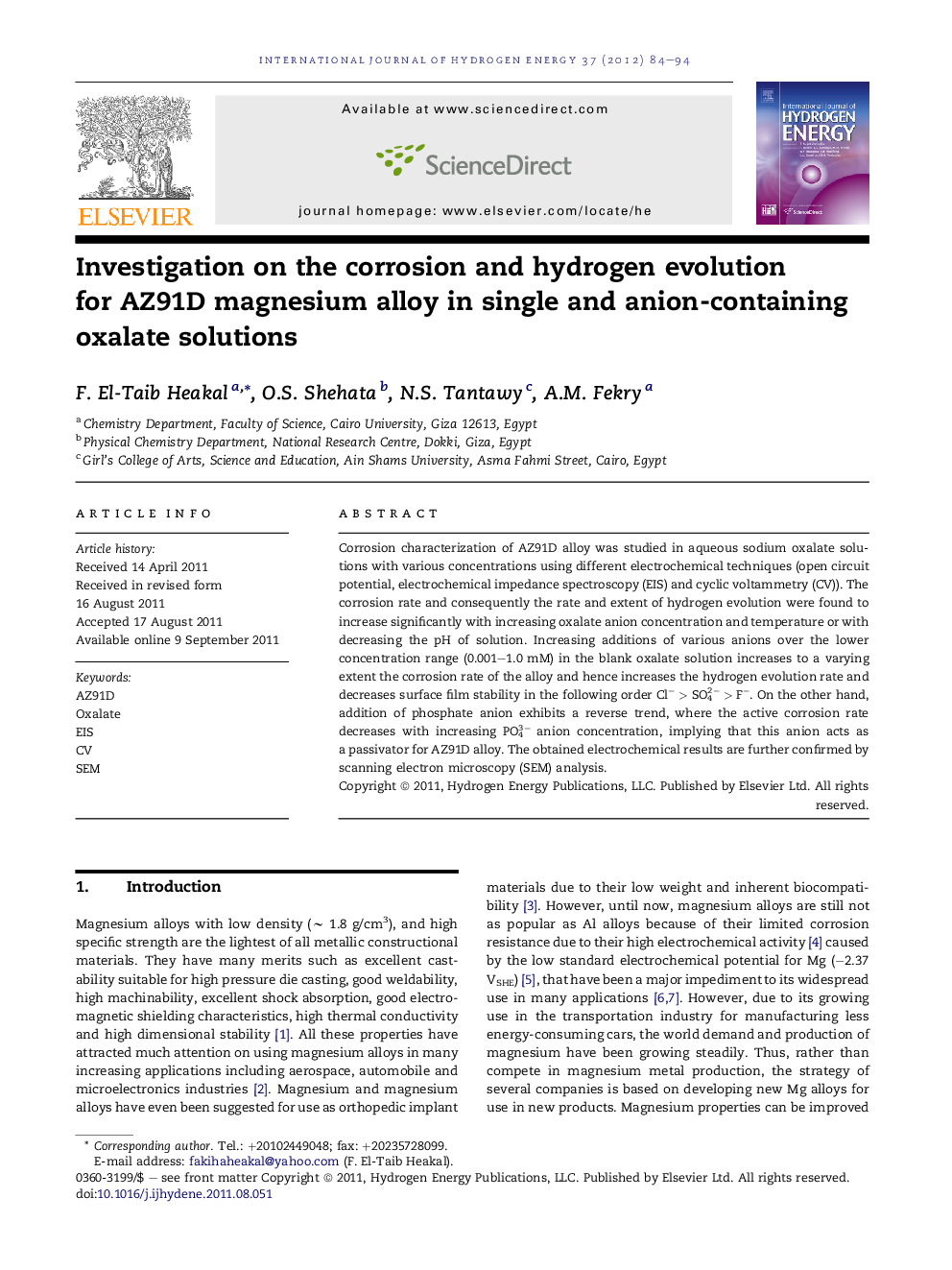| Article ID | Journal | Published Year | Pages | File Type |
|---|---|---|---|---|
| 1277124 | International Journal of Hydrogen Energy | 2012 | 11 Pages |
Corrosion characterization of AZ91D alloy was studied in aqueous sodium oxalate solutions with various concentrations using different electrochemical techniques (open circuit potential, electrochemical impedance spectroscopy (EIS) and cyclic voltammetry (CV)). The corrosion rate and consequently the rate and extent of hydrogen evolution were found to increase significantly with increasing oxalate anion concentration and temperature or with decreasing the pH of solution. Increasing additions of various anions over the lower concentration range (0.001–1.0 mM) in the blank oxalate solution increases to a varying extent the corrosion rate of the alloy and hence increases the hydrogen evolution rate and decreases surface film stability in the following order Cl− > SO42− > F−. On the other hand, addition of phosphate anion exhibits a reverse trend, where the active corrosion rate decreases with increasing PO43− anion concentration, implying that this anion acts as a passivator for AZ91D alloy. The obtained electrochemical results are further confirmed by scanning electron microscopy (SEM) analysis.
► Corrosion rate of AZ91D and hydrogen evolution increase with oxalate concentration. ► Increasing ambient temperature or lowering solution pH exhibits the same trend. ► Presence of F−, SO42− or Cl− increases corrosion rate and decreases film stability. ► PO43− addition improves film stability of AZ91D and decreases hydrogen evolution. ► SEM micrographs confirm well the obtained electrochemical results.
